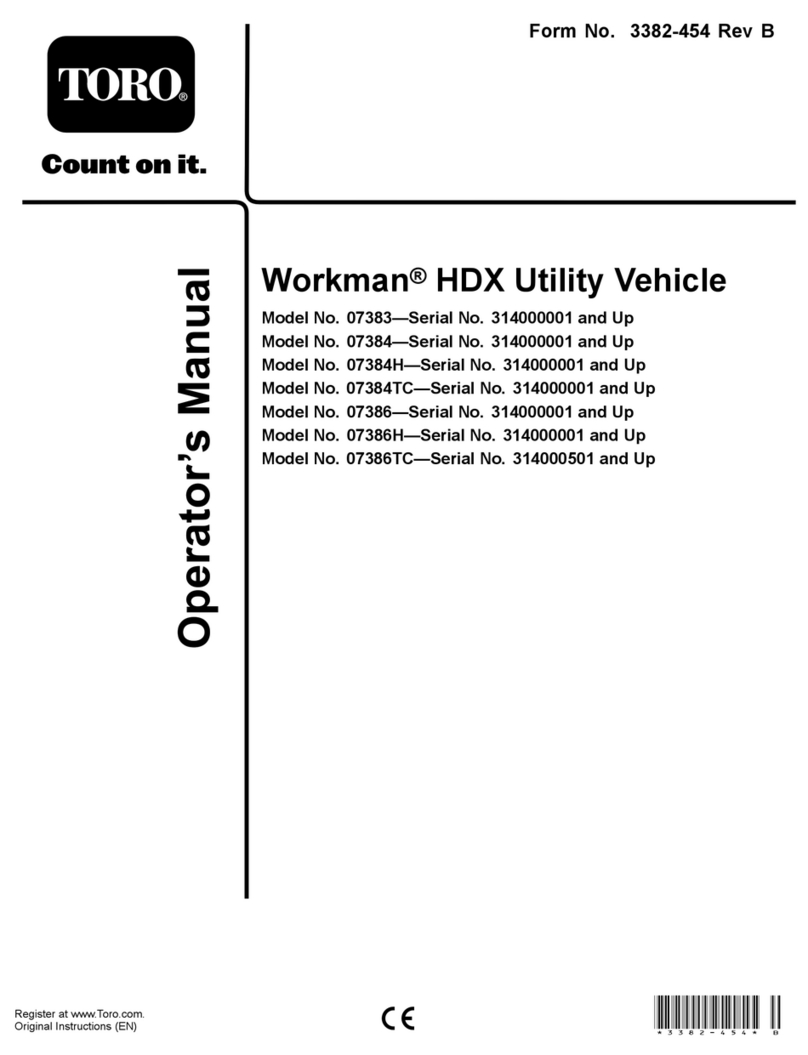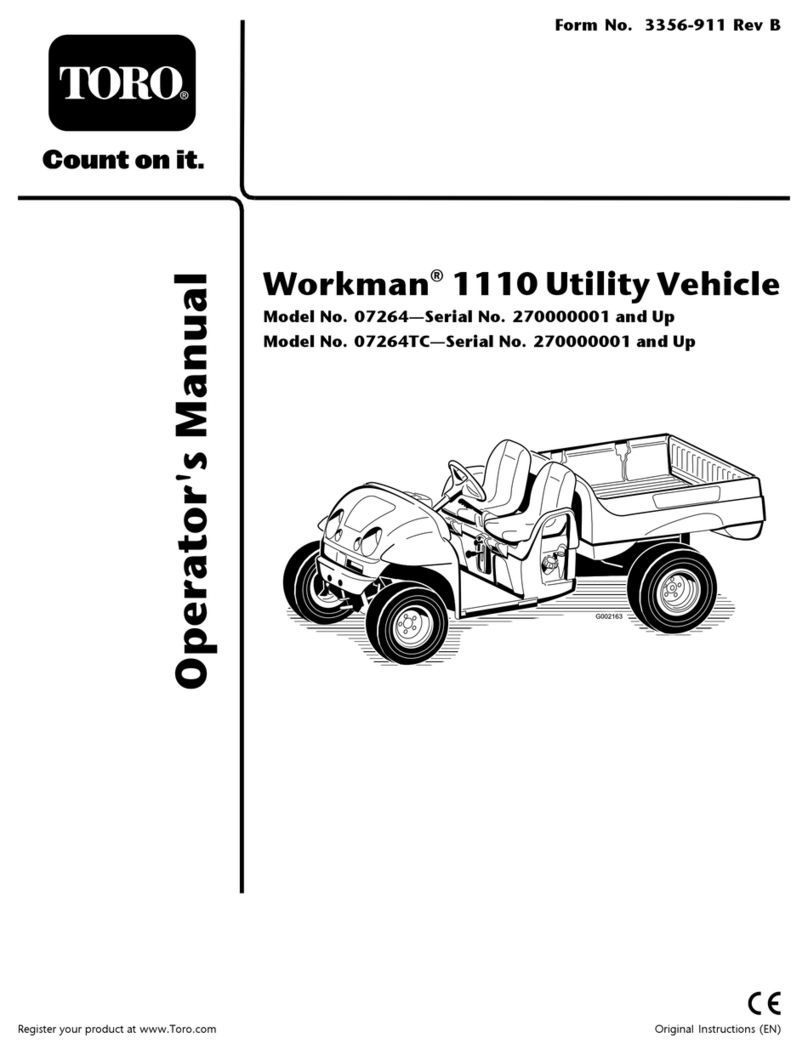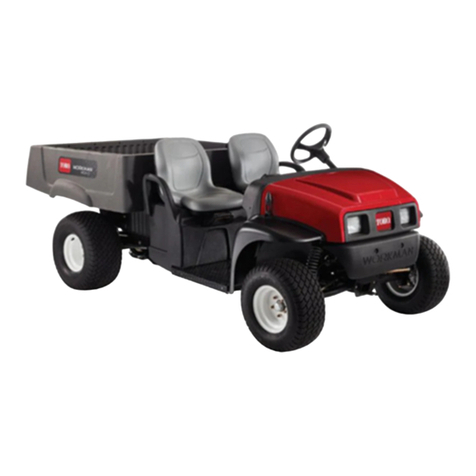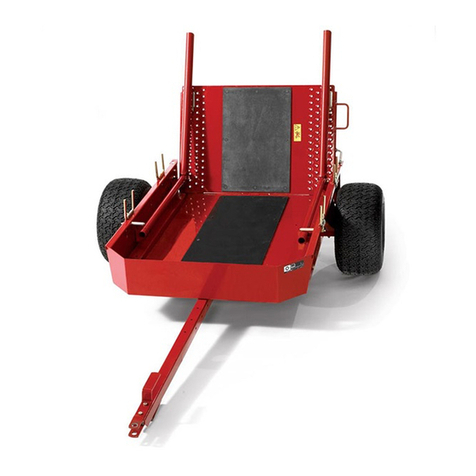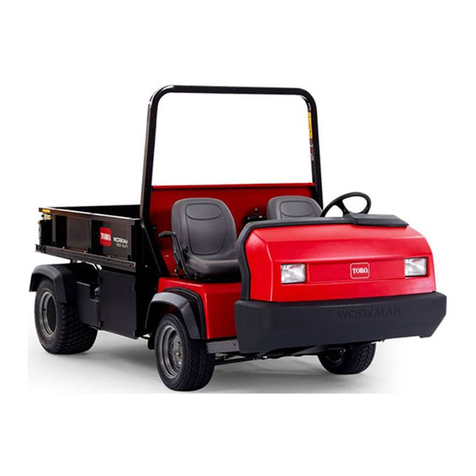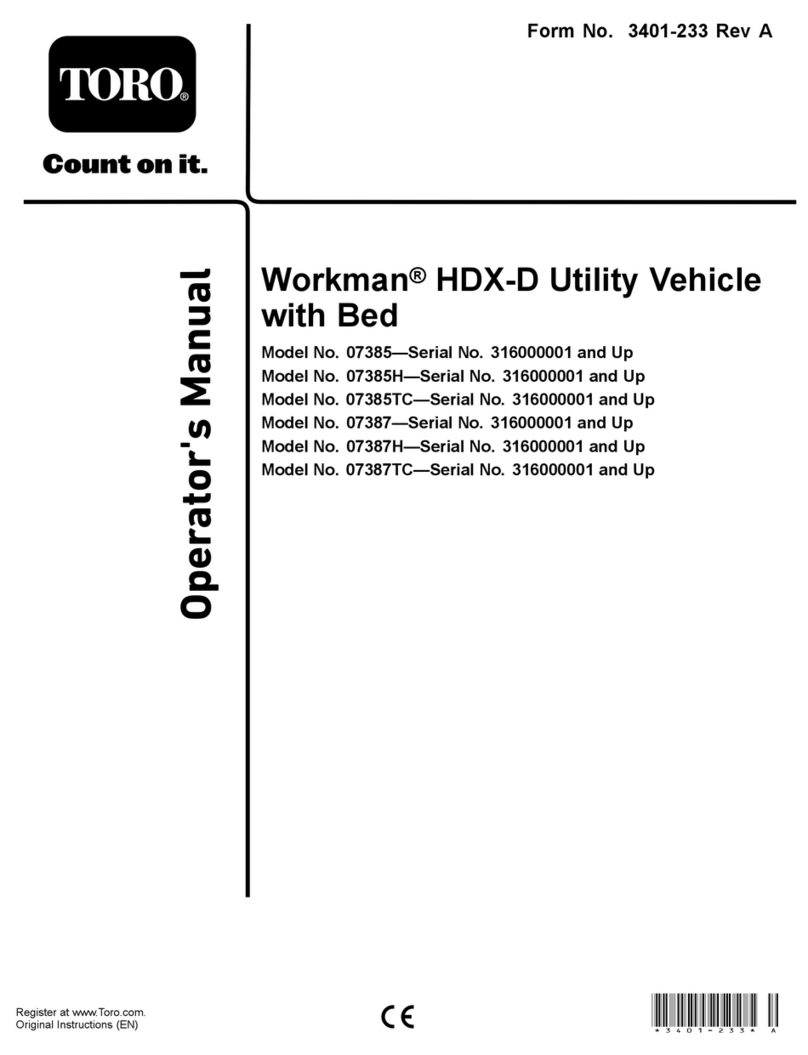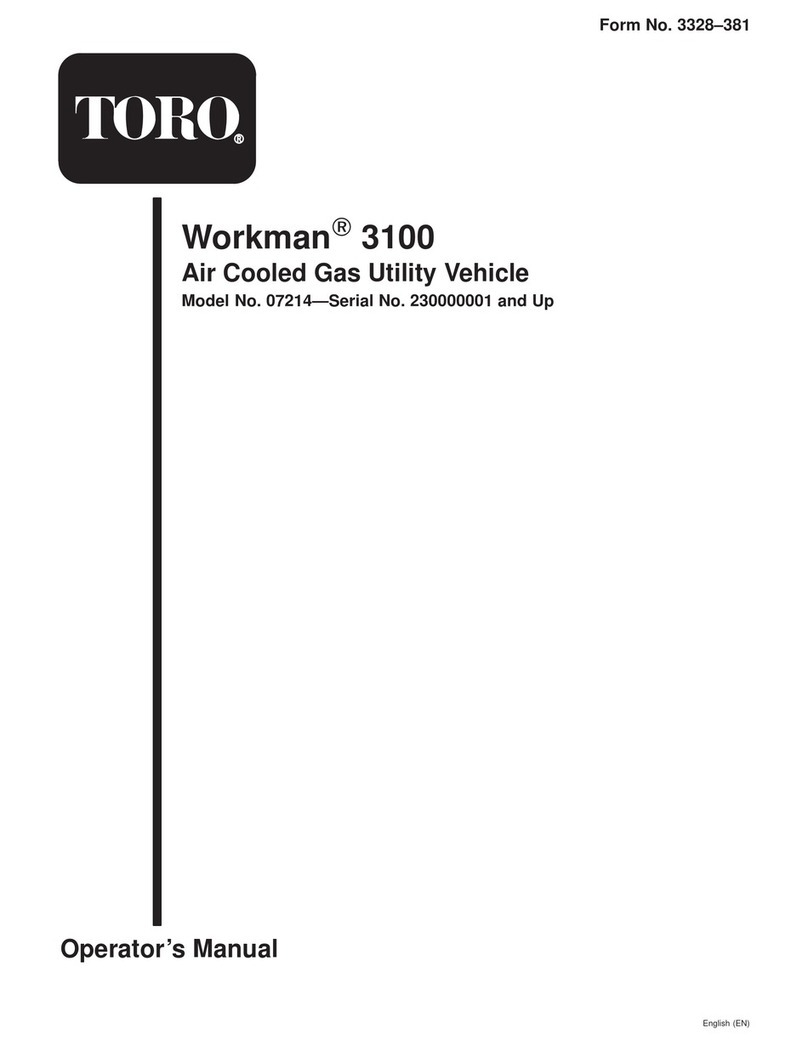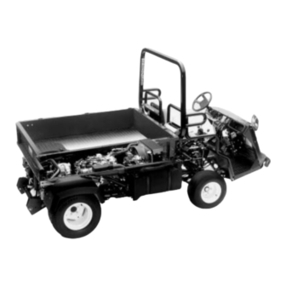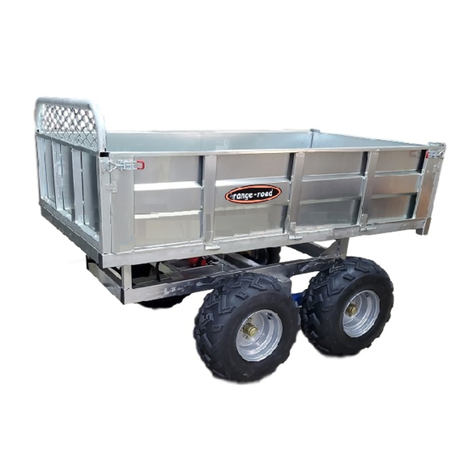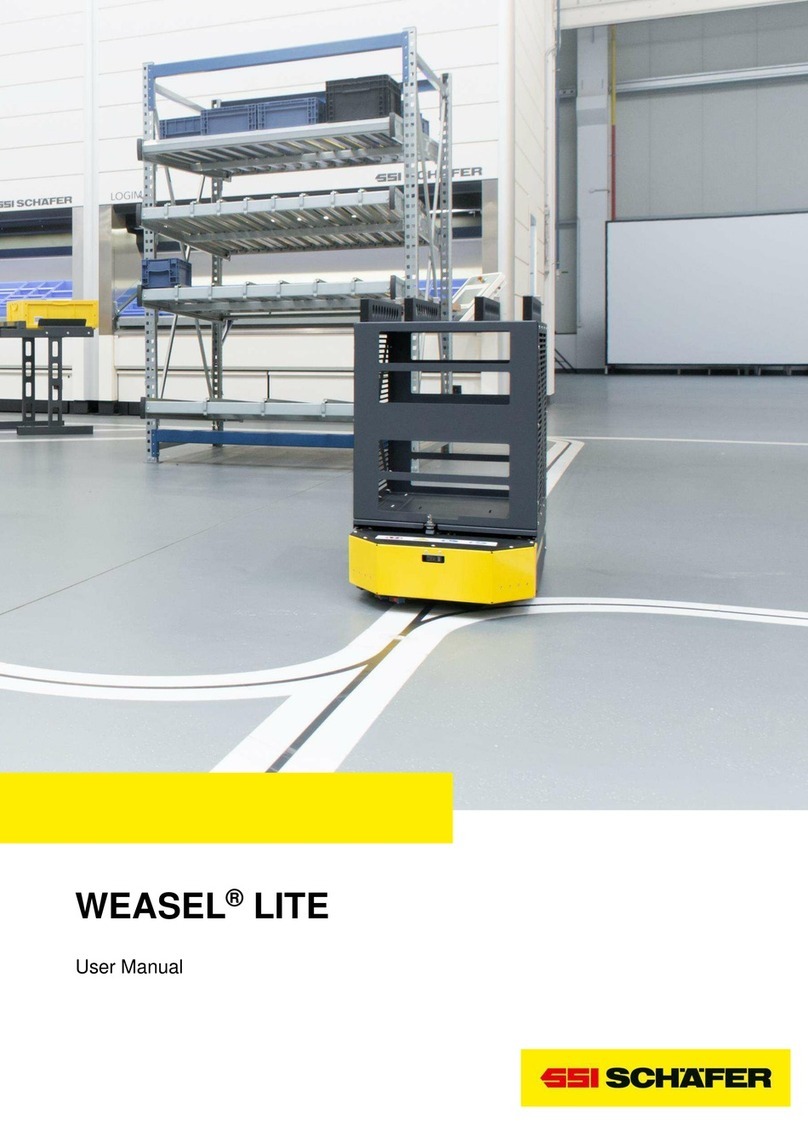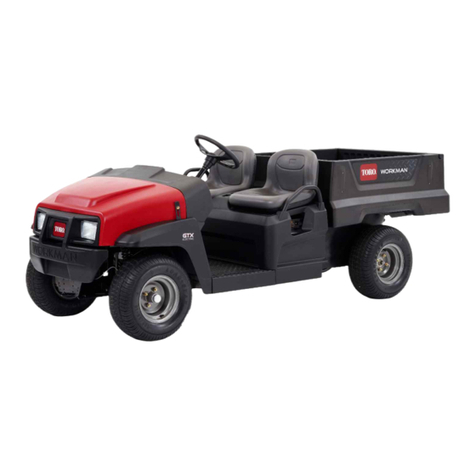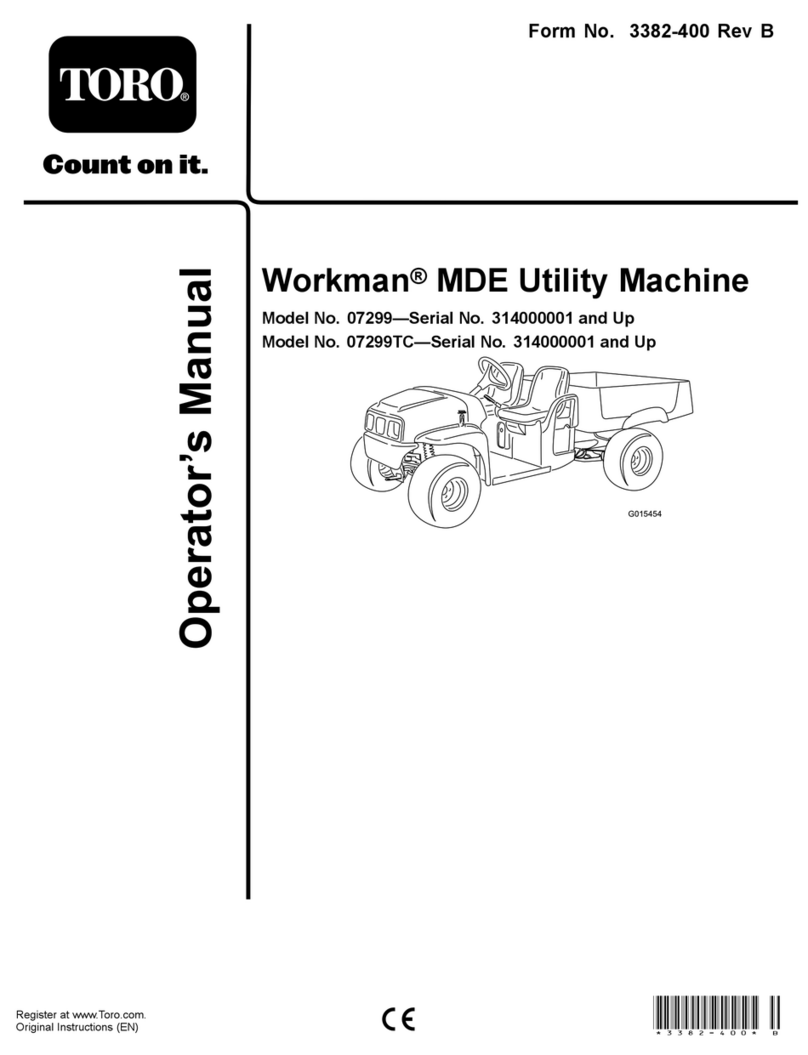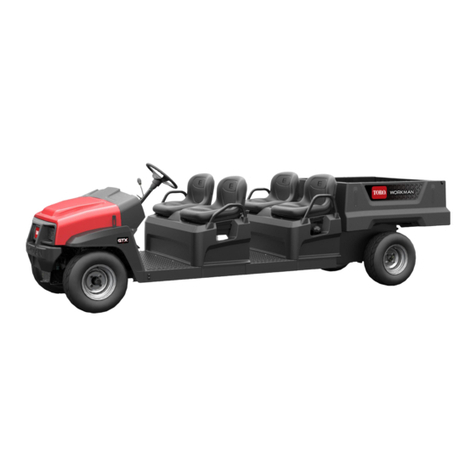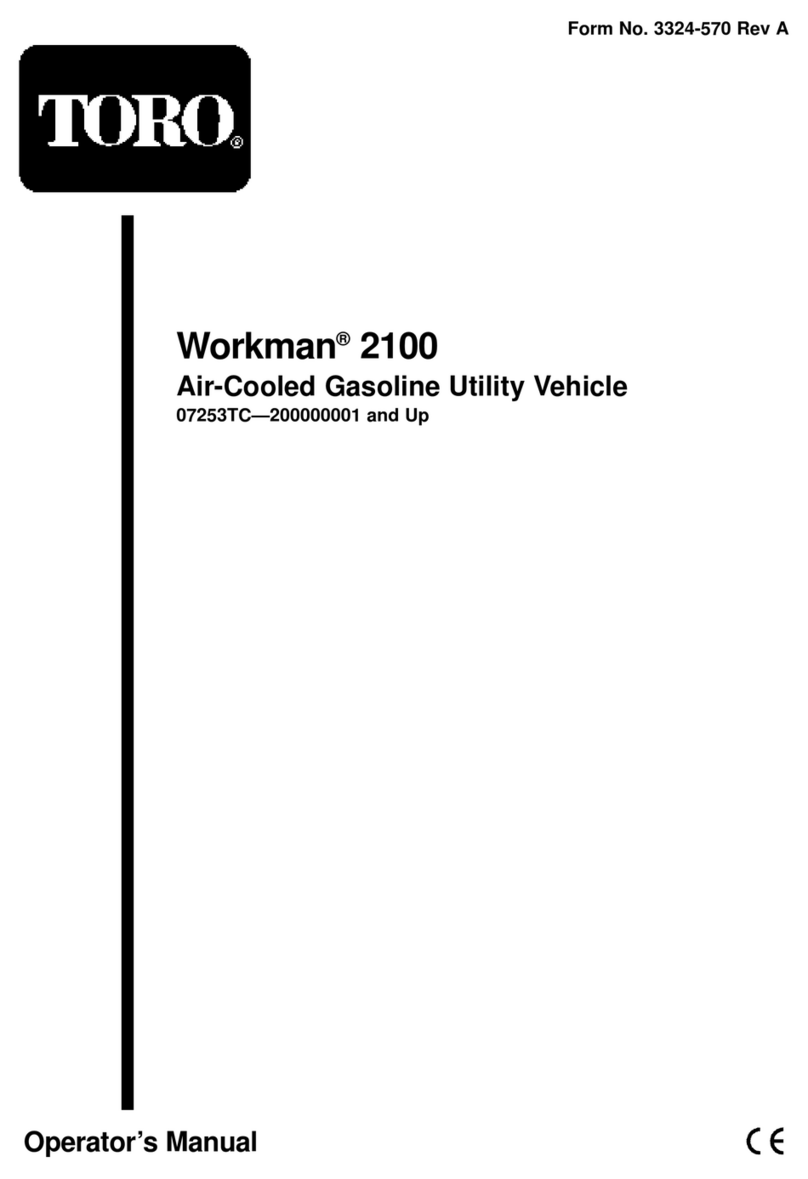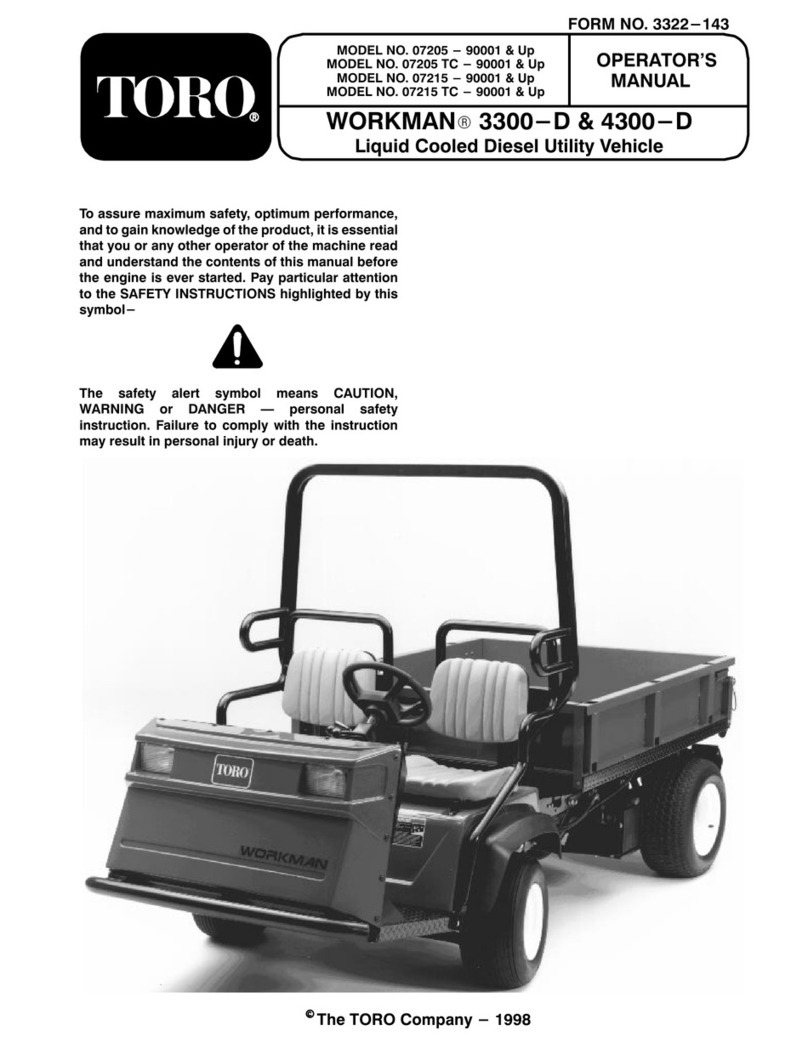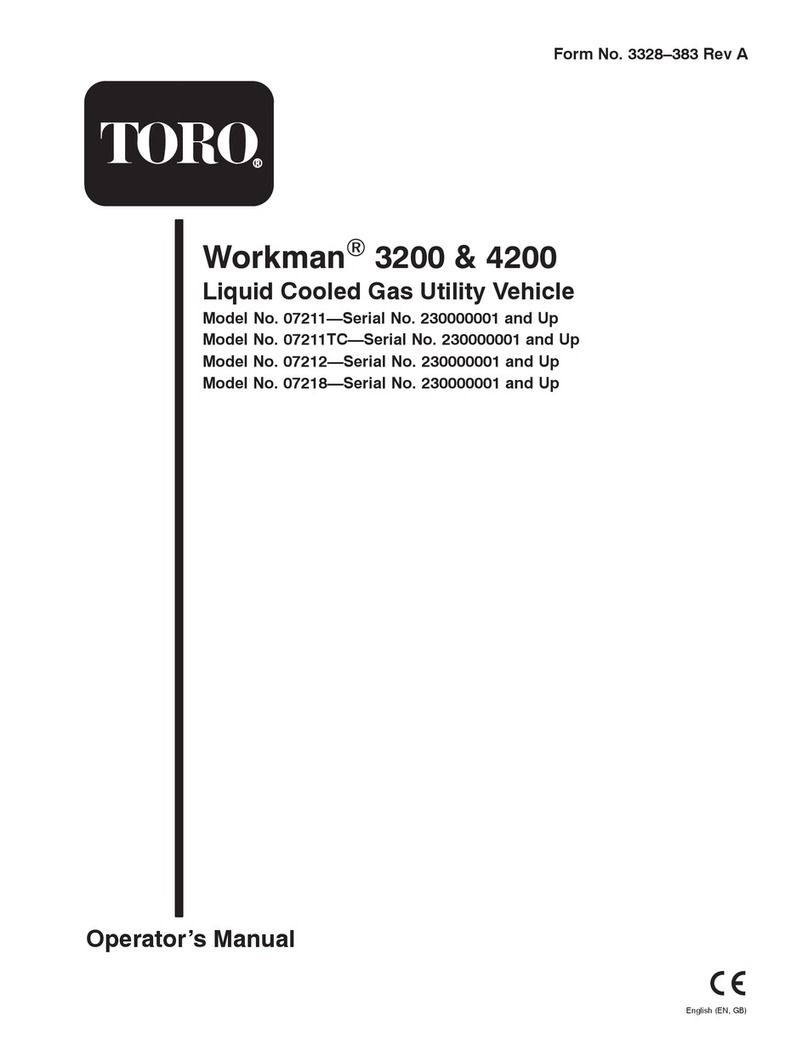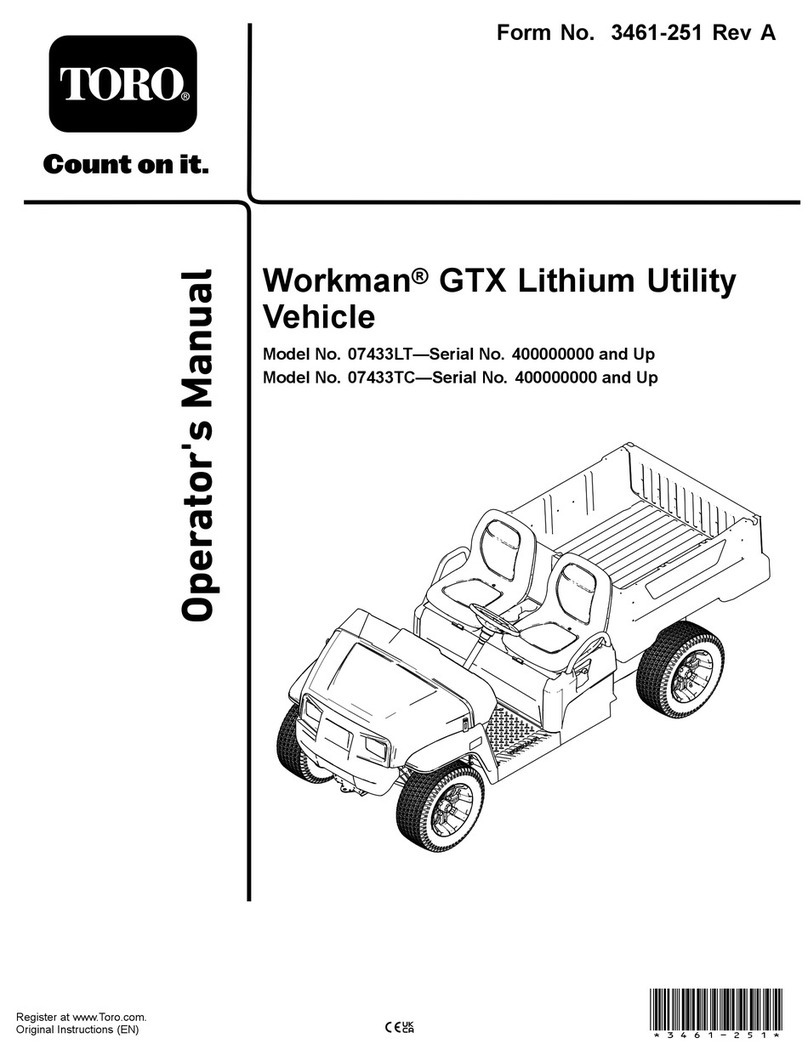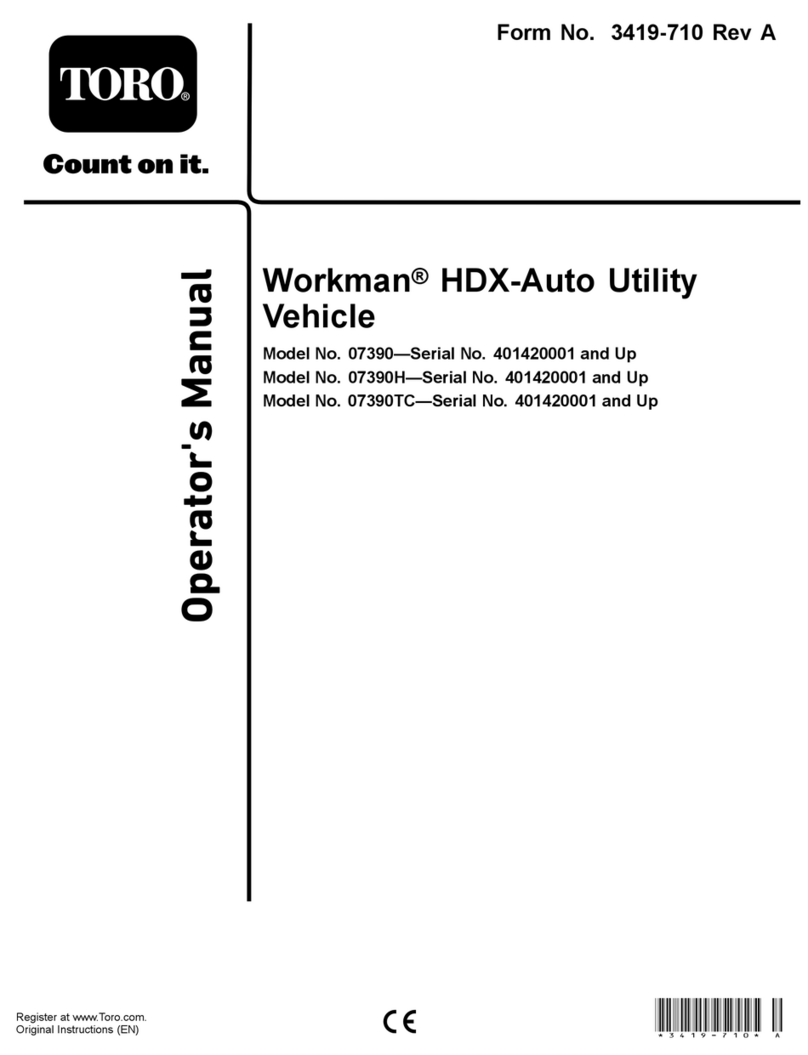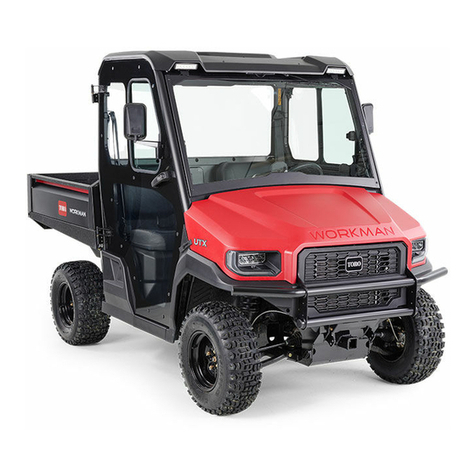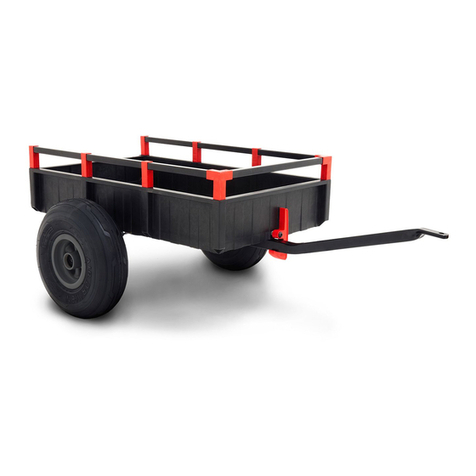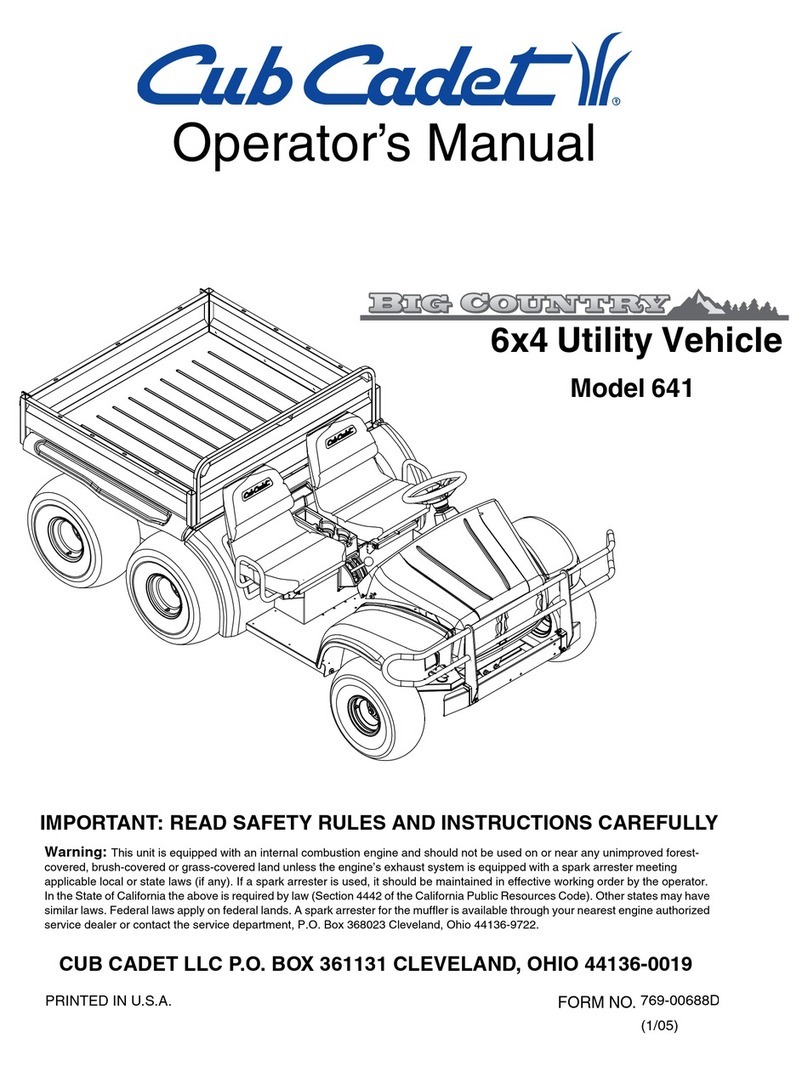
Workman HD Series
Page 1 − 4
Safety
Maintenance and Service
1. Before servicing or making adjustments, turn all ac-
cessories off, put traction pedal in neutral, stop engine,
engage parking brake and remove key from the ignition
switch.
2. Make sure vehicle is in safe operating condition by
keeping all nuts, bolts and screws tight.
3. Never store the vehicle or fuel container inside
where there is an open flame, such as near a water heat-
er or furnace.
4. Never work under a raised bed without placing the
bed safety support on the fully extended lift cylinder rod.
5. Make sure all hydraulic line connectors are tight and
that all hydraulic hoses and lines are in good condition,
before applying pressure to the system.
6. Keep body and hands away from pin hole leaks in hy-
draulic lines that eject high pressure hydraulic fluid. Use
cardboard or paper to find hydraulic leaks. Hydraulic
fluid escaping under pressure can penetrate skin and
cause injury. Fluid accidentally injected into the skin
must be surgically removed within a few hours by a doc-
tor familiar with this form of injury or gangrene may re-
sult.
7. Before disconnecting or performing any work on the
hydraulic system, all pressure in hydraulic system must
be relieved. To relieve system pressure, push hydraulic
lever forward and backward and rotate steering wheel
in both directions after the ignition switch has been
turned off.
8. If major repairs are ever needed or assistance is de-
sired, contact an Authorized Toro Distributor.
9. To reduce potential fire hazard, keep engine area
free of excessive grease, grass, leaves and dirt.
10.If engine must be running to perform maintenance or
an adjustment, keep clothing, hands, feet and other
parts of the body away from moving parts. Keep by-
standers away.
11.Do not overspeed the engine by changing governor
setting. To ensure safety and accuracy, check maximum
engine speed.
12.Shut engine off before checking or adding oil to the
engine crankcase.
13.Disconnect battery before servicing the vehicle. Dis-
connect negative (−) battery cable first and positive (+)
cable last. If battery voltage is required for troubleshoot-
ing or test procedures, temporarily connect the battery.
Connect positive (+) cable first and negative (−) cable
last.
14.Battery acid is poisonous and can cause burns.
Avoid contact with skin, eyes and clothing. Protect your
face, eyes and clothing when working with a battery.
15.Battery gases can explode. Keep cigarettes, sparks
and flames away from the battery.
16.To ensure optimum performance and continued
safety of the vehicle, use genuine Toro replacement
parts and accessories. Replacement parts and acces-
sories made by other manufacturers may result in non-
conformance with safety standards and the warranty
may be voided.
17.When raising the vehicle to change tires or to per-
form other service, use correct blocks, hoists and jacks.
Make sure vehicle is parked on a solid level surface such
as a concrete floor. Prior to raising the vehicle, remove
any attachments that may interfere with the safe and
proper raising of the vehicle. Always chock or block
wheels. Use appropriate jack stands to support the
raised vehicle. If the vehicle is not properly supported by
jack stands, the vehicle may move or fall, which may re-
sult in personal injury (see Jacking Vehicle in this sec-
tion).
